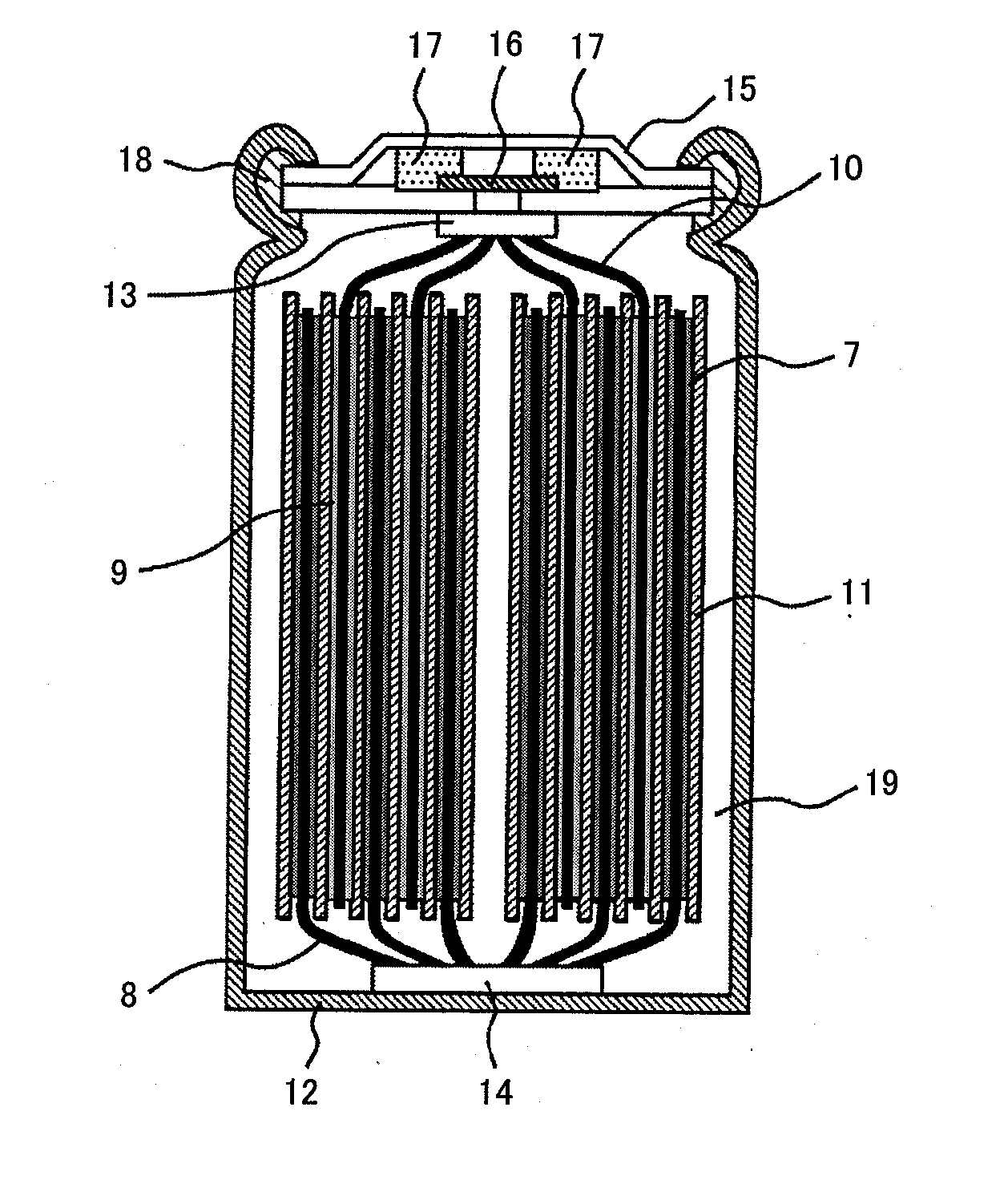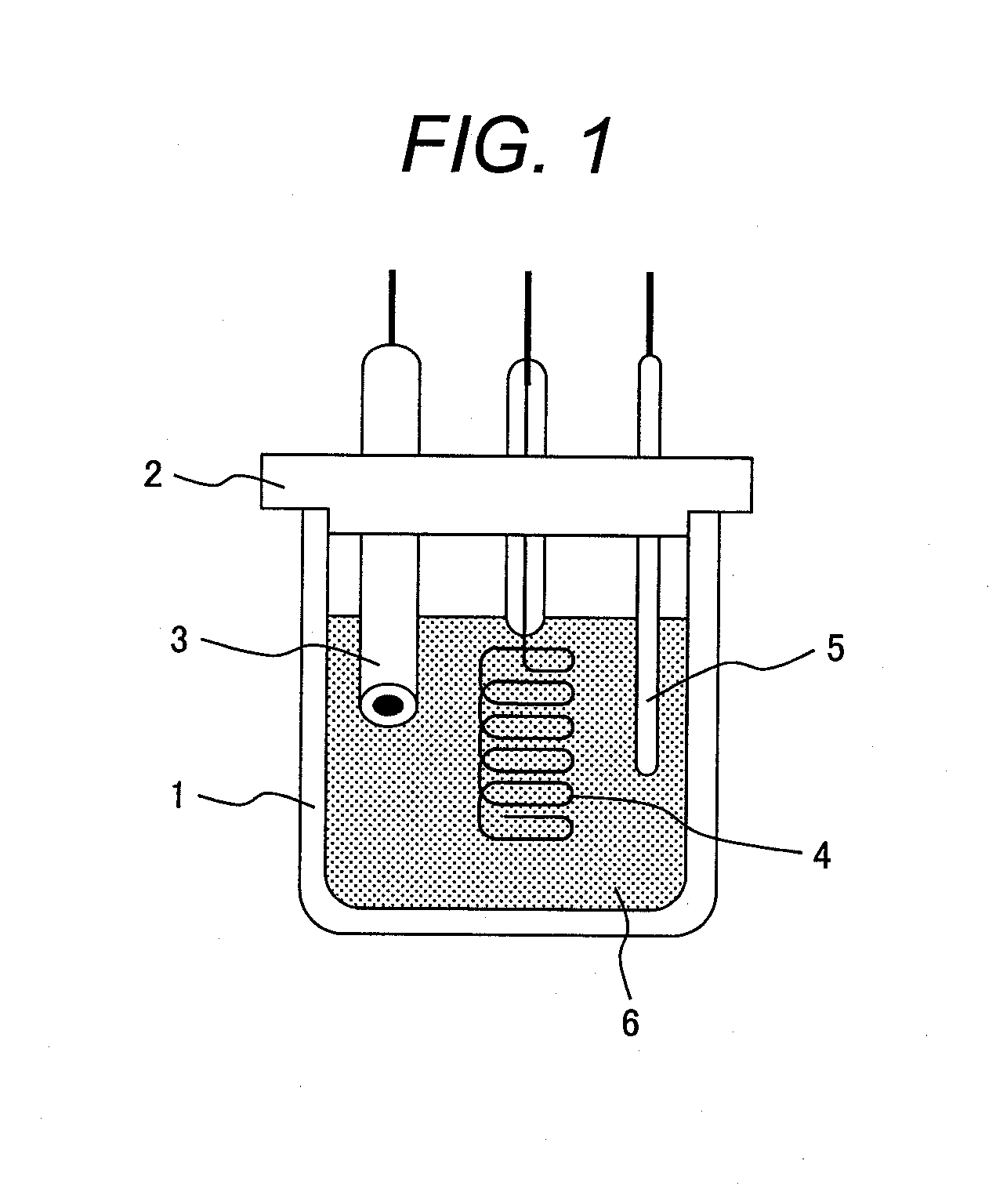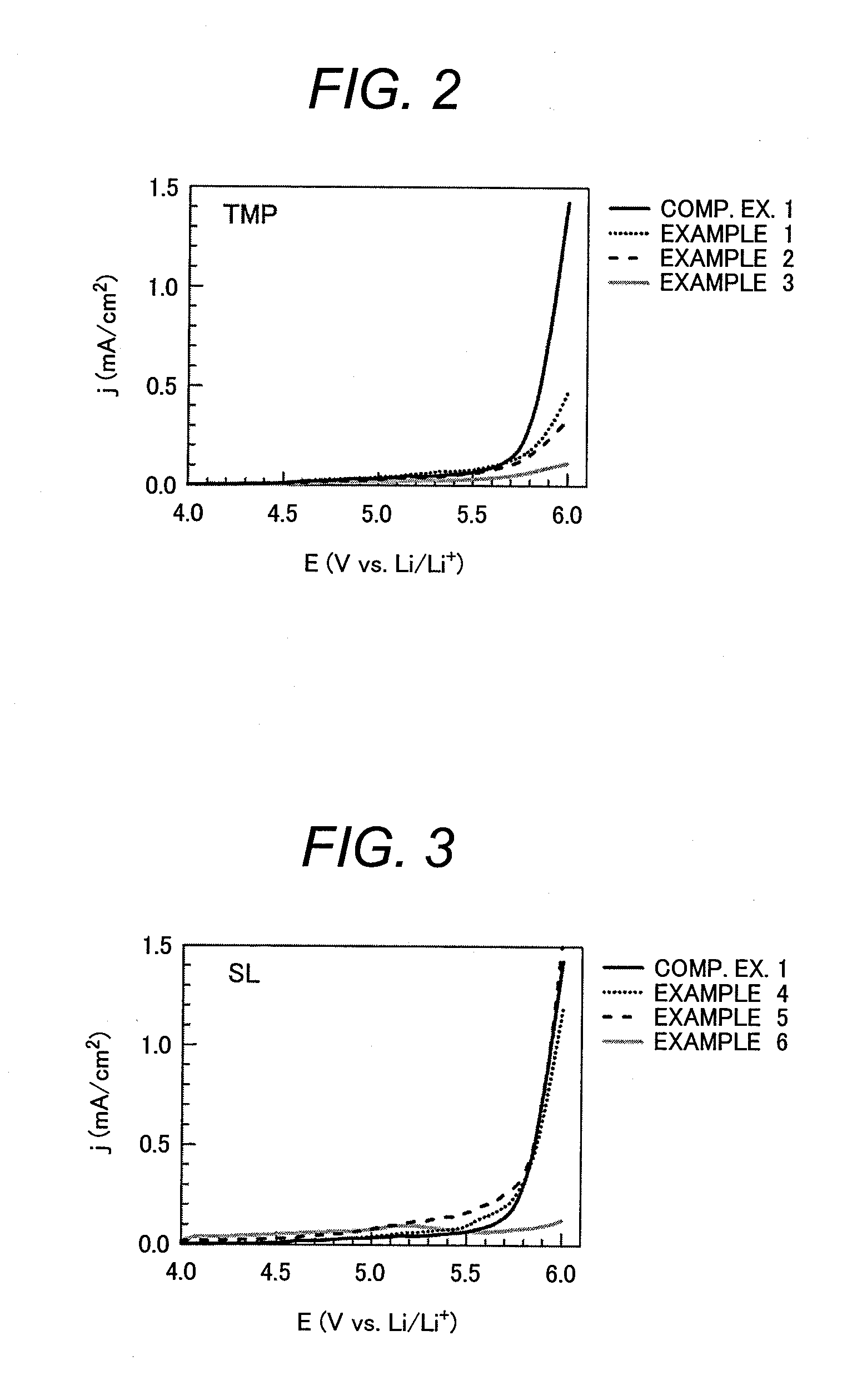Lithium-ion secondary battery
a lithium-ion secondary battery and lithium-ion battery technology, applied in the direction of non-aqueous electrolyte cells, cell components, electrochemical generators, etc., can solve the problems of shortening the life of batteries, failure to specify the composition of all the components in the electrolytic solution, and reaction on the surface of anodes, so as to reduce the number of batteries needed, prolong the life, and increase the battery output
- Summary
- Abstract
- Description
- Claims
- Application Information
AI Technical Summary
Benefits of technology
Problems solved by technology
Method used
Image
Examples
example 1
[0078]An electrolytic solution was prepared by dissolving 1 mol / L of lithium salt LiPF6 as an electrolyte in a 20:40:40 (by volume) solvent mixture of EC, DMC, and EMC to give a solution; and adding to the solution trimethyl phosphate (TMP, additive) in an amount of 0.8 percent by weight relative to the total weight of the solution composed of the solvent mixture and the electrolyte salt. The electrolytic solution was subjected to an LSV measurement on the oxidizing side using the LSV measurement cell, and the resulting data are indicated as Example 1.
example 2
[0079]An electrolytic solution was prepared by dissolving 1 mol / L of lithium salt LiPF6 as an electrolyte in a 20:40:40 (by volume) solvent mixture of EC, DMC, and EMC to give a solution; and adding to the solution TMP in an amount of 4.8 percent by weight relative to the total weight of the solution composed of the solvent mixture and the electrolyte salt. The electrolytic solution was subjected to an LSV measurement on the oxidizing side using the LSV measurement cell, and the resulting data are indicated as Example 2.
example 3
[0080]An electrolytic solution was prepared by dissolving 1 mol / L of lithium salt LiPF6 as an electrolyte in a 20:40:40 (by volume) solvent mixture of EC, DMC, and EMC to give a solution; and adding to the solution TMP in an amount of 20 percent by weight relative to the total weight of the solution composed of the solvent mixture and the electrolyte salt. The electrolytic solution was subjected to an LSV measurement on the oxidizing side using the LSV measurement cell, and the resulting data are indicated as Example 3.
PUM
| Property | Measurement | Unit |
|---|---|---|
| interlayer distance | aaaaa | aaaaa |
| volume ratio | aaaaa | aaaaa |
| interlayer distance d002 | aaaaa | aaaaa |
Abstract
Description
Claims
Application Information
 Login to View More
Login to View More - R&D
- Intellectual Property
- Life Sciences
- Materials
- Tech Scout
- Unparalleled Data Quality
- Higher Quality Content
- 60% Fewer Hallucinations
Browse by: Latest US Patents, China's latest patents, Technical Efficacy Thesaurus, Application Domain, Technology Topic, Popular Technical Reports.
© 2025 PatSnap. All rights reserved.Legal|Privacy policy|Modern Slavery Act Transparency Statement|Sitemap|About US| Contact US: help@patsnap.com



